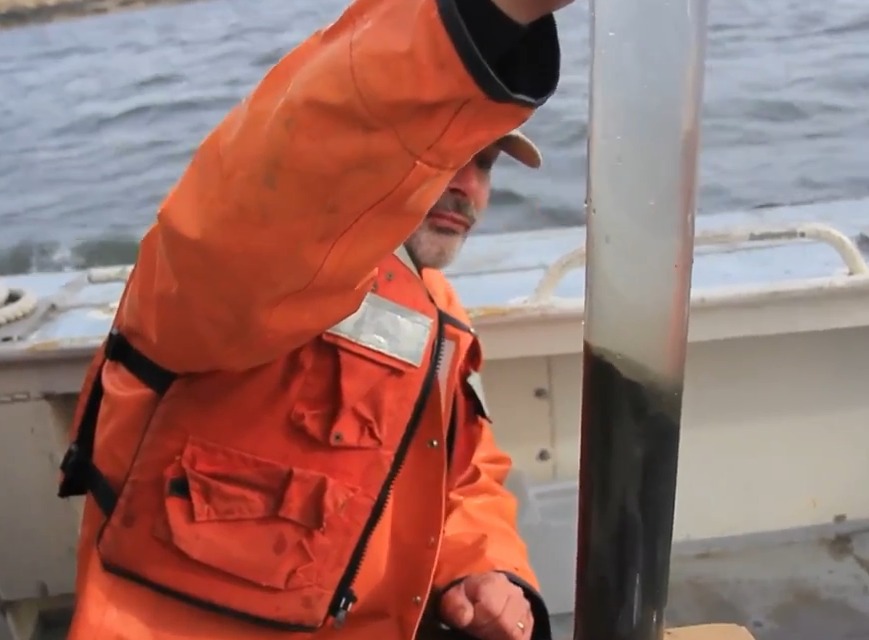For most people affected by superstorm Sandy, the damage was plain to see: devastated homes, impossible traffic, even lost lives. But for Bruce Brownawell, the storm’s biggest consequences are buried under several meters of seawater. Brownawell is a marine scientist at SUNY-Stony Brook who has spent the last several years becoming intimately acquainted with the chemical makeup of mud on the floor of various bays, harbors, and inlets in the New York City area.
When Sandy hit, several local scientists saw opportunity: For Bruce, it was a chance to return to these areas and investigate how strong storm tides shifted mud around — particularly in areas close to several low-lying sewage treatment plants that were knocked out during the storm and dumped raw sewage into the water for days. To do that, he and colleague Jessica Dutton of Adelphi University strapped on mud-proof waders and headed out to Hempstead Bay off the south shore of Long Island. Climate Desk crammed onto the boat for the inside dirt.
 This story was produced as part of the Climate Desk collaboration.
This story was produced as part of the Climate Desk collaboration.




